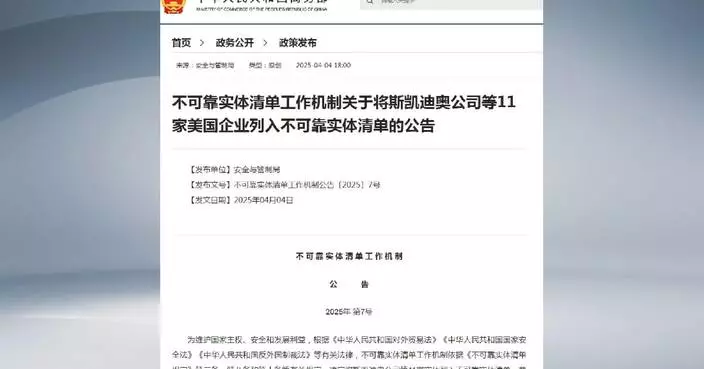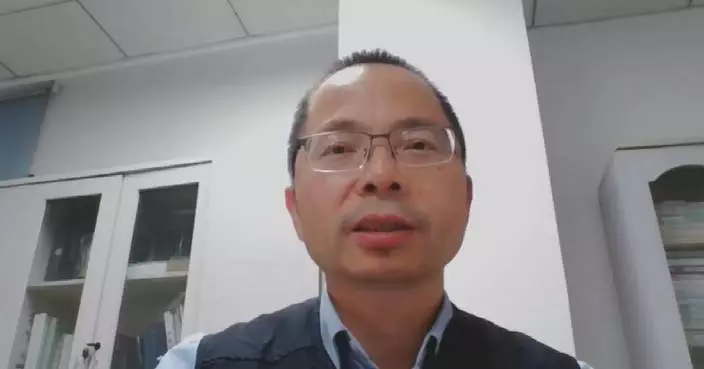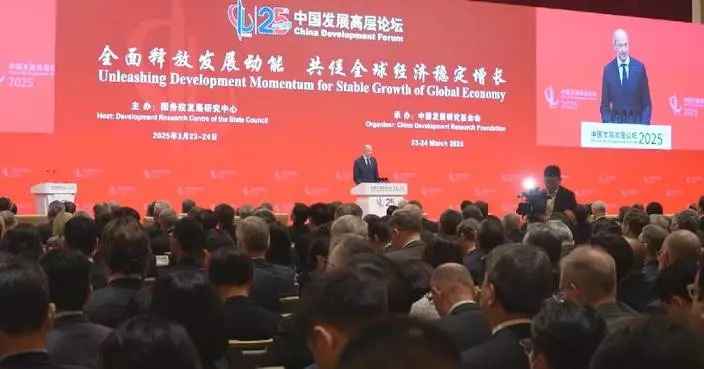Chinese aircraft carriers will be equipped with both the next-gen J-15 and J-35 fighter jets, a senior designer said Tuesday at the 15th China International Aviation and Aerospace Exhibition, or Zhuhai Airshow.
Speaking at a press conference hosted by the Aviation Industry Corporation of China (AVIC), Sun Cong, chief designer of the J-15 fighter jets, highlighted the complementary roles of the two aircraft in a carrier's mission system.
Sun stressed its long development journey dating back to 2004, as part of the air force's move towards "information-centric" warfare.
"When it comes to the development of 'one platform, multiple variants', it's a matter of design philosophy. From the perspective of fighter jets, we've evolved from earlier generations that prioritized altitude and speed to third-generation fighters focused on energy maneuverability. Now, we've entered an era centered on information integration. In other words, a fighter is no longer merely a weapons platform; it's a critical information node. With the nation investing heavily in these projects, we've naturally adapted the design for multi-service use, adopting a systematic, series-based approach. The J-35's development, which started as far back as 2004, is a testament to this long-term effort, and unveiled to the public now," he said.
Furthermore, Sun told the media that non-stealth aircraft like the J-15 are suitable for missions after securing air superiority, while stealth fighters such as the J-35 are pivotal in achieving air dominance.
"The purpose of showcasing these aircraft is to highlight their coordinated roles on carriers. The J-15 and J-35 are designed to complement each other's capabilities. Typically, once air superiority is achieved, non-stealth aircraft can be widely deployed. However, during the initial phase of securing air superiority, high-performance stealth jets such as the J-35 are essential. This reflects a systematic approach to the development of carrier-based aviation," Sun said.
This year's event is running from Tuesday to Sunday.

Chinese aircraft carrier to be equipped with J-15, J-35: designer

Chinese aircraft carrier to be equipped with J-15, J-35: designer
A high-level mediation team from the African Union (AU) Commission has been dispatched to Juba, capital of South Sudan, to try to ease the rising tensions between President Salva Kiir and First Vice President Riek Machar, and help resolve the current political crisis in the country.
Riek Machar and several senior officials have been detained since clashes erupted in January between the South Sudan People's Defense Forces and the opposition fighters.
Machar was accused of instigating violence in Nasir in the northern part of the country.
The mediation team says it plans to engage Machar, but that meeting is yet to take place.
The AU is urging South Sudanese political leaders to resolve the current disagreement through dialogue.
Machar heads the largest opposition group that has an armed wing in the country, known as SPLM/A-IO.
South Sudan's government says it's still investigating Machar for being allegedly involved in clashes between government troops and armed civilians affiliated to SPLM/A-IO in Nasir.
"The mandate of the RTGoNU (the Revitalized Transitional Government of National Unity) is simple; that we stop war, we form a revitalized government of national unity so that we return security, sustainable peace in the country," said Martin Elia Lomuro, South Sudan's Minister of Cabinet Affairs.
Meanwhile, Machar's party members are calling on president Kiir to order the release of their leader.
The group argues that the arrest of Machar means the 2018 peace deal which ended five years of violence in the country has partially collapsed.
The government reaffirms its commitment to the implementation of the 2018 peace deal.
It says Mr. Machar is in conflict with the law and that the implementation of the peace deal should not be used as cover to commit crime. However, until now, South Sudanese law enforcement agencies have not charged Machar with any offense in a court of law.
South Sudan, which became independent in 2011, signed a peace deal in 2018 that ended a civil war between forces loyal to Kiir and Machar. Nearly 400,000 people died in the civil war.
Relations between Kiir and Machar, who have dominated South Sudan's politics for decades, remain strained. The clashes and latest political tensions between the two leaders have unsettled many citizens and the international community.

AU dispatches Panel of Wise to address ongoing instability in South Sudan

















































